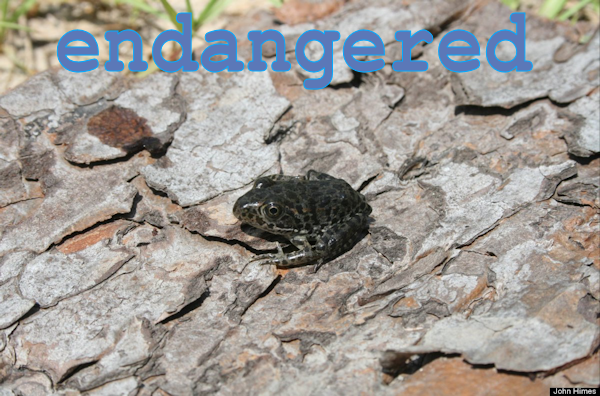Frog Glossary G
 Genotype: This is the "internally coded,
inheritable information" carried
by all living organisms. This stored information is used as a "blueprint" or
set
of instructions for building and maintaining a living creature. These instructions
are found within almost all cells (the "internal" part), they are written in a
coded language, they are copied at the time of cell division or
reproduction and are passed from
one generation to the next. These
instructions are intimately involved with all aspects of the life of a cell or an
organism. They control everything from the formation of protein macromolecules,
to the regulation of metabolism and synthesis. See also Phenotype.
(From Science @ a Distance.)
Genotype: This is the "internally coded,
inheritable information" carried
by all living organisms. This stored information is used as a "blueprint" or
set
of instructions for building and maintaining a living creature. These instructions
are found within almost all cells (the "internal" part), they are written in a
coded language, they are copied at the time of cell division or
reproduction and are passed from
one generation to the next. These
instructions are intimately involved with all aspects of the life of a cell or an
organism. They control everything from the formation of protein macromolecules,
to the regulation of metabolism and synthesis. See also Phenotype.
(From Science @ a Distance.)
Genus: A taxonomic classification of a group of
species having similar characteristics.
The genus falls between the next higher designation of "family" and the next lower designation
of "species". The lower the classification, the closer in relationship the animals that are grouped
together become. Genera is the singular genus. The generic name is always capitalized.
Gram: A unit of measurement, used in the metric
system. Equal to 1/1000 of a kilogram.
Granuloma: A tumor of the pink tissue that may form during wound healing.
It can also occur from inflammation, injury or infection.
Gravid: Pregnant. Frogs and toads do not get pregnant.
Instead, you may see the females swollen with eggs, but they are unfertilized
until they leave her body and become fertilized with the sperm of the male frog.
Gular: Pertaining to the throat.


